Motorcycle Investor mag
Subscribe to our free email news

Profile – Yamaha FJ1100 and 1200 series
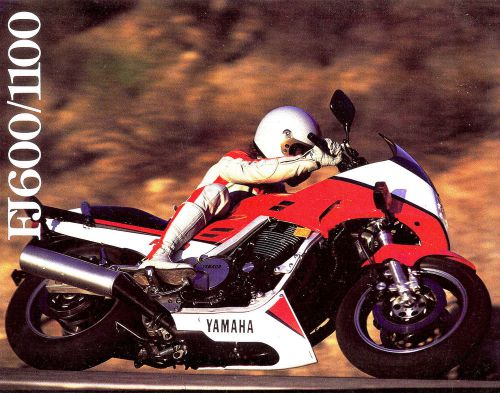
FJ Flyer
by Guy ‘Guido’ Allen, Jan 2021
Yamaha's FJ1100 and 1200 series ranks highly among the legendary eighties performance bikes
When Yamaha's big FJ1100 was finally launched in 1984, two years after its predecessor XS1100 series had disappeared out of showrooms, it was regarded as a very serious performance bike.
Cycle World mag in the USA had this to offer, when talking of a model that carried a lot of expectations for Yamaha fans: "It's the FJ1100, a bike designed to go head-to-head with the very best, very fastest machines the competition has to offer – Kawasaki's Ninja, Honda's 1000 Interceptor and Suzuki's GS1150. (GPz900R, VF1000 and GSX1100EF in Australia.)
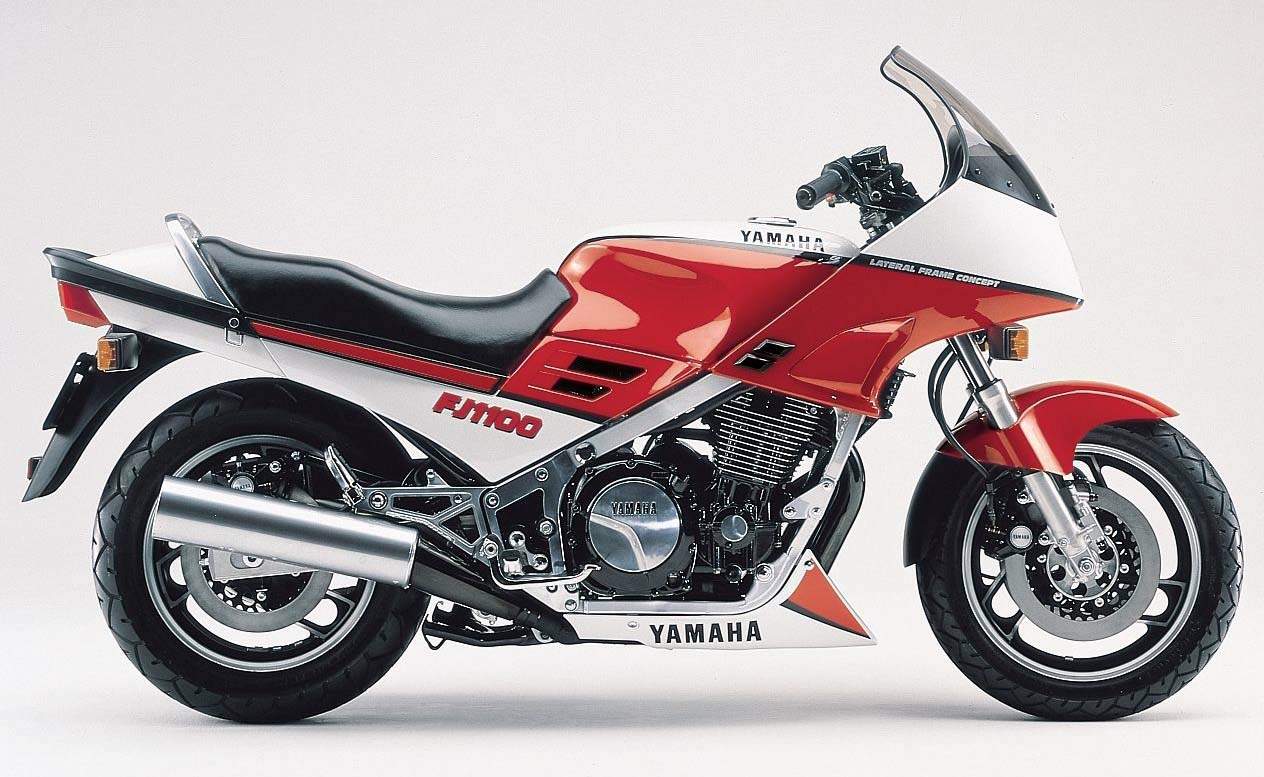
"On a flat deserted stretch of highway in the Mojave Desert, we saw the speed needle on our FJ11 nudge right to the 160mph mark (260km/h). And on another, shorter stretch of deserted pavement – Carlsbad Raceway's quarter-mile dragstrip – the big Yamaha recorded a run of 10.87 seconds at 125mph (200km/h), the quickest time ever posted by a Cycle World test motorcycle." That strip time was later knocked down to under 10.5 by the legendary Jay 'PeeWee' Gleeson.

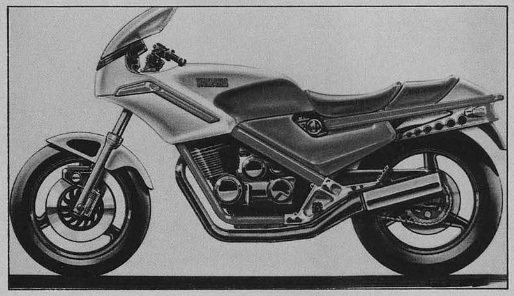
The result of a development that had started in 1980, the biggest surprise for this model was that Yamaha had stuck with air cooling for the powerplant, even when the likes of Honda and Kawasaki had made the jump to liquid-cooled designs.
Running four valves per cylinder and a bank of four 36mm Mikuni CV carburettors, the powerplant claimed a very healthy 125 horses (91kW) at 9000rpm and 86Nm or torque at 8000rpm.
There was a little more innovation in the frame. Yamaha opted for what it called the 'lateral frame concept', which mean it ditched an upper frame spine section in favour of a design that relied on steel box section main spars running either side of the powerplant as part of a twin loop. This in some respects was a distant forerunner in appearance to the twin-spar aluminium frames that were to be widely adopted on performance bikes over the coming decades.
Suspension was fairly high-spec for the time: 41mm front fork with preload and rebound adjustment, plus anti-dive; A rear monoshock also with preload and rebound adjustment. That anti-dive system up front was far from unique to Yamaha. Though of questionable value, all four Japanese makers felt obliged to play with it in the early to mid-1980s.
Another fashion-driven fitment was 16-inch rims at both ends. At the time this mimicked the wheels sizes used in 500cc grands prix and ended up being controversial. These too ended up having a relatively short moment in the sun.
One very practical touch (again, reflecting the tastes of the times) was a large fuel tank, carrying 24.5lt – sufficient for an excellent range. All up the machine claimed a hefty 227kg dry or closer 250-plus wet.
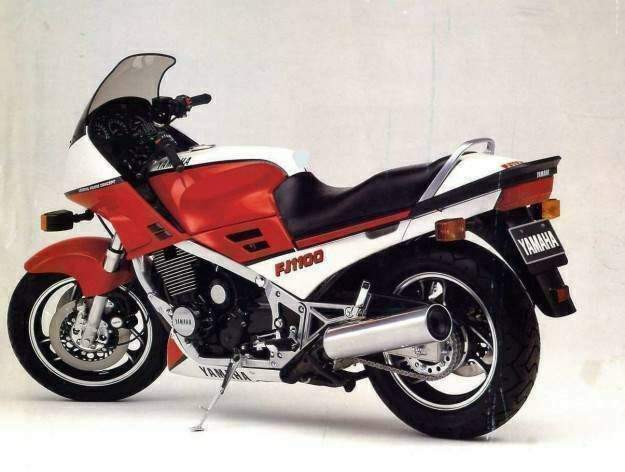
It was also long, so there was room for a pillion, but it was surprisingly low with a modest seat height of 780mm. So you didn't have to be a giant to ride one. And despite the low-slung set-up, it had pretty respectable cornering clearance.
On the road, they were a mighty ride, with performance to burn and the general feeling they were unburstable. Yamaha had stuck with a five rather than six-speed transmission, but this didn't seem like any great disadvantage.
Braking was by two-piston calipers on discs all round and, for the time, was acceptable rather than outstanding.
Steering was aided by the low overall profile, with no great effort required. However the fairly light springing – particularly up front – could see the thing get overwhelmed. You were wise to exercise a little restraint when pressing on, particularly on fast sweepers, as a mid-corner ripple could generate some disturbing behaviour.
While the suspension raised some questions when pushed hard, it was very comfortable over a long trip. Add in a fairing that provided a lot of protection and you had a seriously quick point-to-point mount.
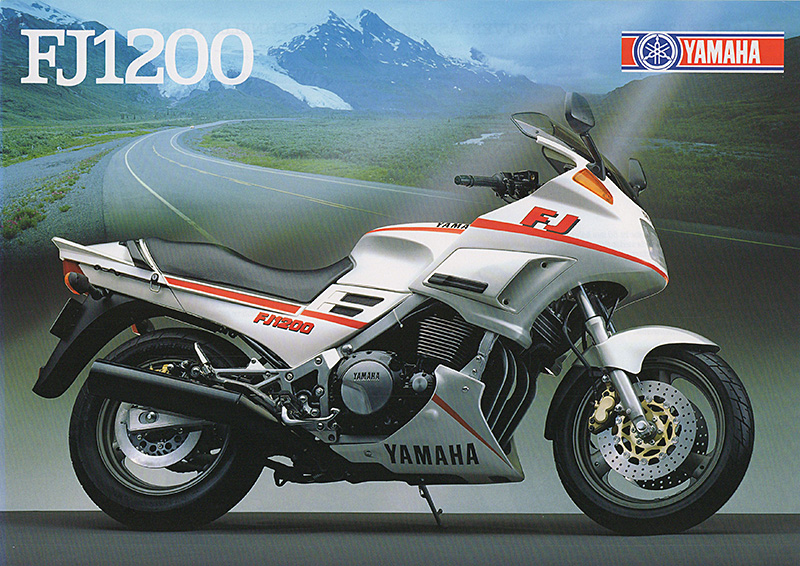
The FJ of course underwent numerous changes over the years, becoming the FJ1200. Its overall manners didn't change hugely – it was always a big fast and friendly ride. However its market position did shift. The release of new generations of more hard-edged sports machinery (such as the FZ and FZR series) saw the big four moved very firmly into the sports tourer camp, rather than the performance leader it once was.
It was 1986 when the FJ became a 1200, picking up a little horsepower (five) but no great gain in overall performance. If anything the capactiy gave it bragging rights and a slightly easier manner.
In 1988 it picked up a 17-inch front wheel. It also lost the anti-dive and picked up much-improved front brakes (four-spotters) with floating discs. There's no question this generation (and later) was a more stable handling package with improved suspension rates. Across the series, there were some other subtle shifts, with a drop in fuel capacity to a still-generous 22lt.
Generally the alterations were relatively minor. However by 1991 you could get the taller aero screen with its twin blades near the top edge, which improved its already formidable touring abilities. ABS was offered as an option in some markets.
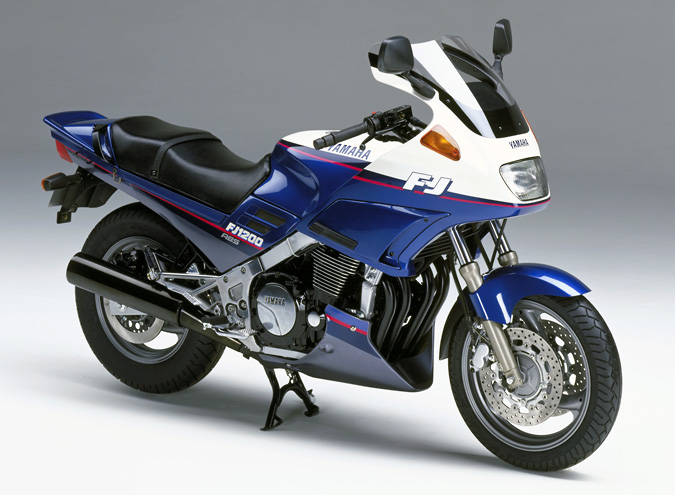
The 1200 also, over time, claimed a useful lift in performance over the first 1100. There were a few extra kW peak power, but more importantly peak torque in the 1991 model had been raised by over 20 per cent and arrived 500rpm earlier. This helped to give the bike terrific top-gear stomp for overtaking.
In general, the powerplant in this series is bulletproof. High milers may show wear in components such as camchain and starter chains, both of which a fairly straight-forward jobs for a workshop. Valve lash intervals are 10,000km.
Owners of FJ1100s sometimes reported them dropping out of second gear. The cure is a replacement shift fork, which should have been done by now. In any case, the issue is well known and replacement parts readily available.
By far the best money you could spend on one would be to treat the suspension to a rebuild by a professional. That will allow you unleash the considerable performance with a degree of confidence.
In 1984 an FJ1100 would have set you back $5400 plus on-road costs (US$4200, GB£3100) in Australia. By 1996, the last year in the local market, the by then venerable 1200 was priced at $14,200 (US$11,000, GB£8100).
There are a couple of ways to look at these things as a proposition today. I'd see a first edition 1100 as being collectible. You won't get rich with one, but a good example should at worst hold its value and I suspect will do better. They were a very significant bike in the marque's history. Models from 1988 will be a better ride and easier to live with, thanks to the more current wheel front rim size and the upgrades to brakes and torque.
What are they worth? We did recently see what claimed to be a dead-original unrestored FJ1100 in exceptional condition advertised for Au$13,000 (US$10,000, GB£7500). That's right up there and raises the question of what it would cost to restore one. Expect to pay closer to half that for a reasonable 1200.
In any case, pick the right one and you'll end up with a big strong motorcycle that has plenty of performance and should be welcome at any vintage Japanese bike gathering.

***
For: fast & strong
Against: tough to find in prime condition
Specs
1984 Yamaha FJ1100 (1991 FJ1200 in brackets)
ENGINE:
TYPE: air-cooled, four-valves-per-cylinder, inline four
CAPACITY: 1097cc
(1188)
BORE & STROKE: 74 x 63.8mm
(77 x 63.8)
COMPRESSION RATIO: 9.5:1
(9.7:1)
FUEL SYSTEM: 36mm Mikuni x 4
TRANSMISSION:
TYPE: Five-speed, constant-mesh,
FINAL DRIVE: Chain
CHASSIS & RUNNING GEAR:
FRAME TYPE: steel box section twin spar & cradle
FRONT SUSPENSION: telescopic fork, 41mm, 3 x preload + rebound + antidive
REAR SUSPENSION: Monoshock, 12 x preload, 17 x rebound (5 and 5)
FRONT BRAKE: 282mm discs with 2-piston calipers
(4-piston calipers)
REAR BRAKE: 282mm disc with 2-piston caliper
DIMENSIONS & CAPACITIES:
WET WEIGHT: 247kg dry, 252kg
wet (245/259)
SEAT HEIGHT: 780mm
WHEELBASE: 1490mm
FUEL CAPACITY: 24.5lt (22)
TYRES:
FRONT: 120/80-16 (120/70-17)
REAR: 150/80-16
PERFORMANCE:
POWER: 91kW @ 9000rpm
(95)
TORQUE: 86Nm @ 8000rpm (108 @ 7500)
OTHER STUFF:
NEW PRICE $5400 plus ORC (10,300)
-------------------------------------------------
Produced by AllMoto abn 61 400 694 722
Privacy: we do not collect cookies or any other data.

Archives
Contact




